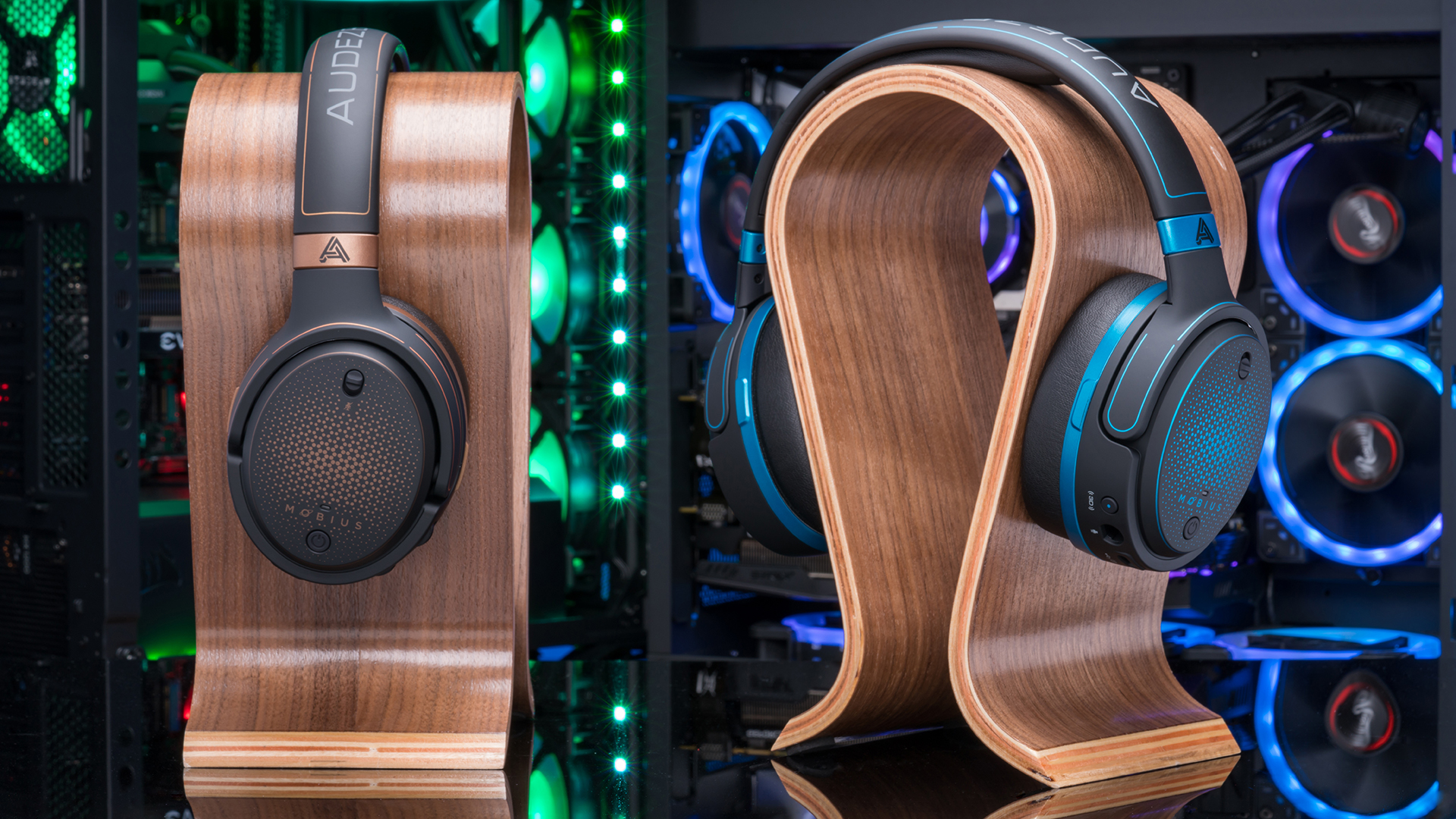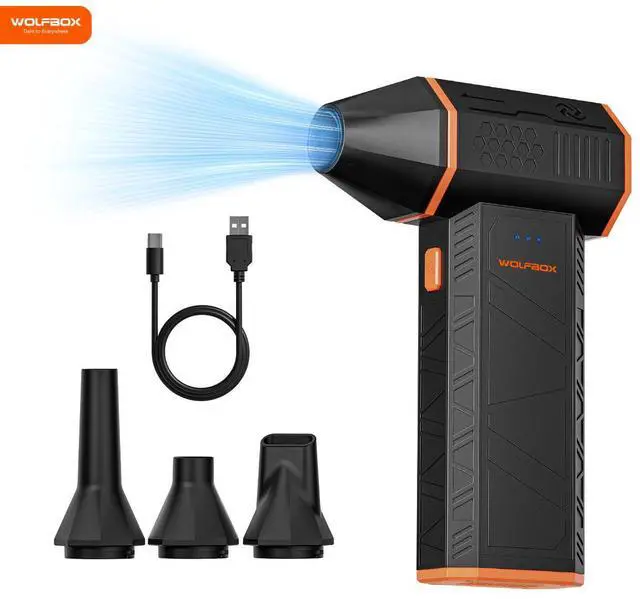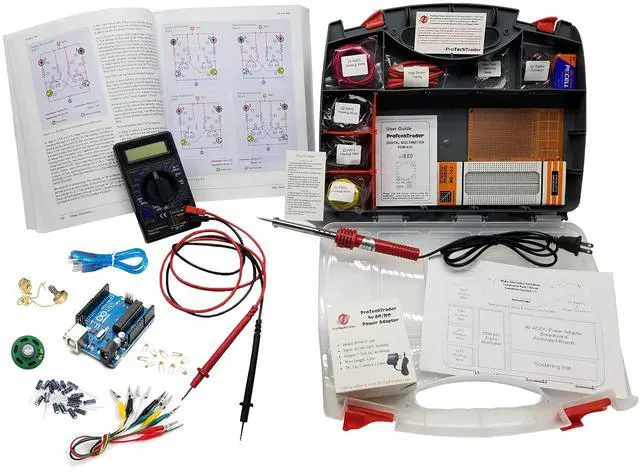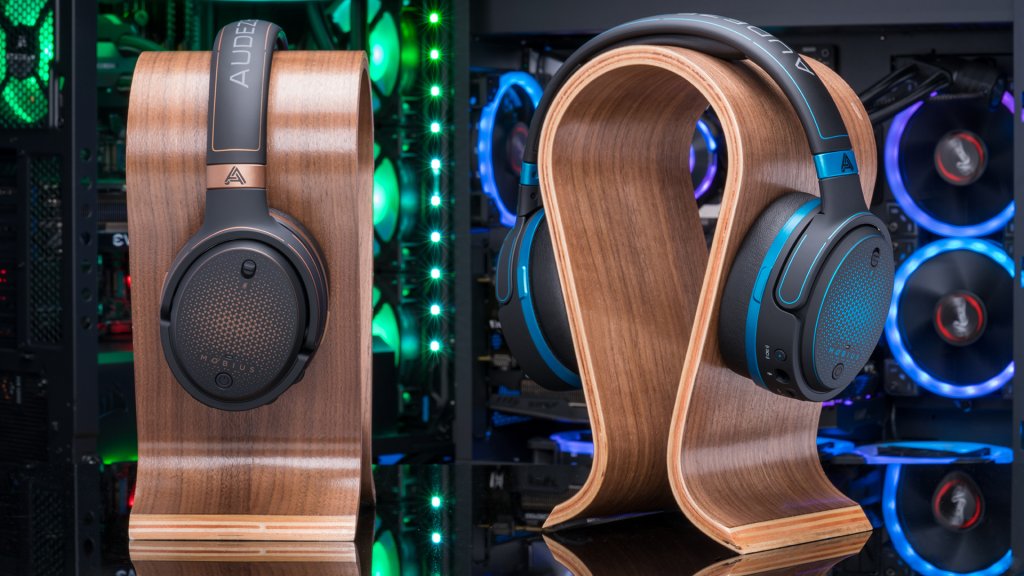
My dinner’s getting cold sitting out on the table. I’m scrambling to find a pen and paper so I can jot down some of my excited thoughts about the Audeze Mobius gaming headphones. I sat down with the headphones, without looking at the manual, and settled in to watch the latest episode of The Good Place on my iPad while testing out the latest gadget to come through Newegg. I already have a pretty nice pair of Sennheiser headphones.
I know Audeze has a good reputation, so I expected these to be about on par or slightly better than my current set of cans. I certainly wasn’t expecting to be left frantically jotting down a torrent of excited thoughts about a pair of headphones on the weekend. And yet, here we are: it’s 8pm, my hand is cramping as I scribble this hunched over my notebook, and I’m already certain that the Audeze Mobius is the most exciting piece of tech I’ve ever written about.
Bringing Audiophile Sound to Gamers
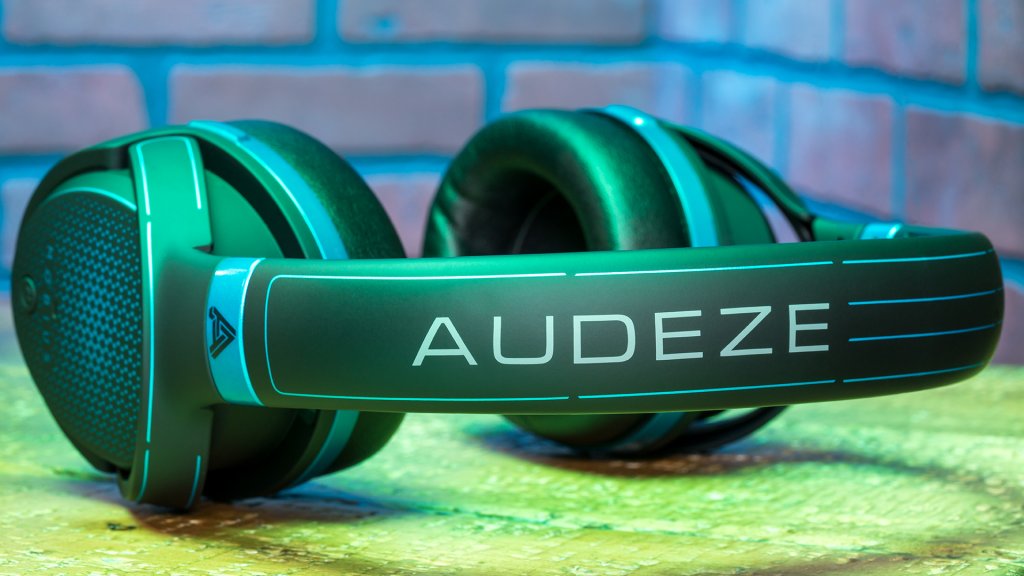
I’ve long had audiophile aspirations. If I had the checking account of an oil baron, I’d likely be spending my days re-balancing the tonearm on a lavish NASA-engineered turntable, placing high-priced crystals around the room as if conducting a seance for perfect room sound treatment. That being said, I lost my faith in the idea of a higher fidelity audio experience for a little while; I thought I heard the best I could hear in the world of high-res audio without spending thousands of dollars on nothing but diminishing returns. The Audeze Mobius turned me back into a true believer, and showed me that I can still be rendered stupefied by a well-engineered piece of audio electronics.
If you’re an audiophile, you’re probably champing at the bit hearing that Audeze is diving into gaming headsets. Audeze has become a premier brand for discerning audiophiles, and the Mobius headphones are their vanguard entry into the gaming market. The Mobius is not your dime a dozen gaming headset, which are typically clad in garish LEDs with noisy marketing masking the often tinny audio and poor build quality. Audeze lets their headphones speak for themselves — and speak they do, with remarkable clarity.
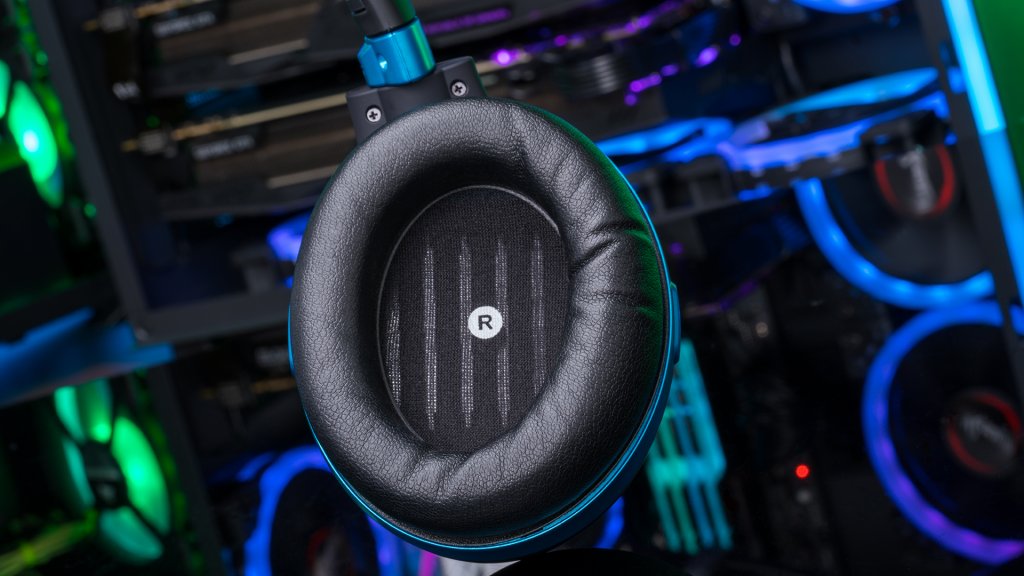
Audeze’s pioneering innovation is their use of planar magnetic drivers for their headphones. Most traditional headphones use a moving coil, or “dynamic,” driver. Dynamic drivers are composed of a magnet connected to the headphone’s frame, a thin membrane called a diaphragm, and the coil. When a signal runs through the coil, it creates a magnetic field that reacts to the magnet in the frame. As current passes through the coil, the coil rapidly moves back and forth, moving the diaphragm (also known as a cone) which, in concert with the air around it, generates sound.
In contrast, planar magnetic drivers use a diaphragm with a printed circuit spread across a thin film. This film of circuits, when interacting with the magnetic field, spreads the force across the entire diaphragm, instead of one single point as with a dynamic driver’s coil. This setup affords a range of benefits to the listener including lower distortion, wider frequency response, and greater accuracy to the input signal. Thanks to fewer moving parts than dynamic drivers, headphones with planar magnetic drivers are generally more durable too. This combination of benefits have earned Audeze’s planar magnetic headphones a spot in the hearts of countless audiophiles.
When Audiophile Meets Gamer
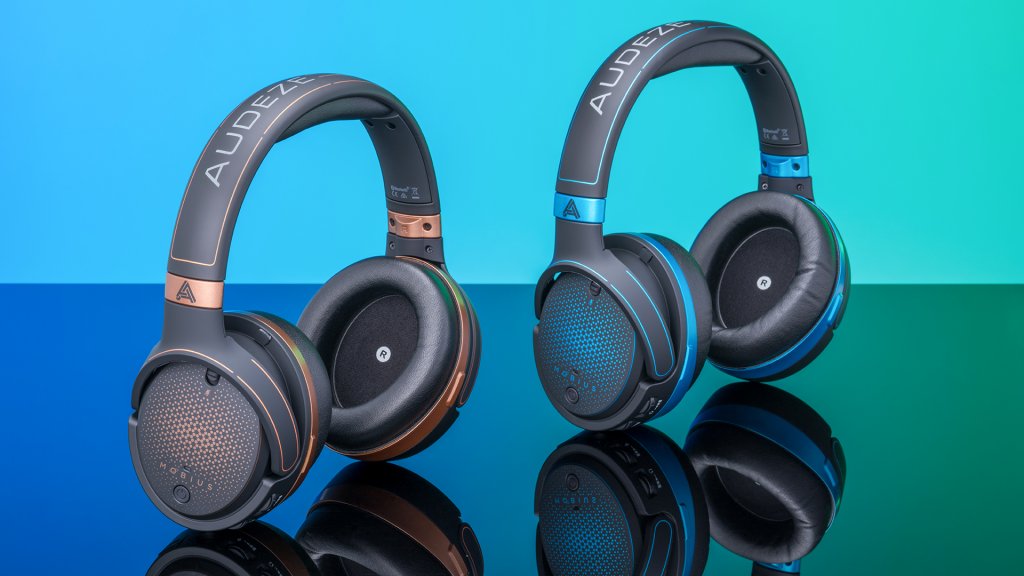
Audeze started with headphones mostly designed for high-res music listening, and while the Mobius carries on their legacy of excellence in that field, Audeze’s main objective with their new headset is breaching the gaming space. To achieve their mission, they’ve focused on delivering high-fidelity audio alongside a wide aural soundscape to offer both a competitive gaming advantage through superior positional audio tech and a more immersive experience.
“Immersive.” That term is bandied about a lot when discussing gaming tech, so much that I hesitate to use it here. But the Mobius’ remarkable 3D audio earns it the “immersive” moniker more than any piece of gaming tech I’ve used since the first time I donned a modern VR headset. This is nothing like the 3D movie and TV gimmick that stigmatized the entire notion of “3D.” Instead, the 3D audio of the Mobius in more akin to a virtual reality landscape, just without a visual component.
For help developing the real-time 3D processing technology powering the Mobius, Audeze turned to Waves, one of the leading creators of professional-grade audio plugins and signal processors. Their collaboration has wrought a formidable combination of audio innovations. Three technologies comprise the Mobius’ 3D audio: Sound Localization, Integrated Head Tracking, and Room Emulation.
Sound localization dynamically changes the source of sound as you move around, while the head tracking pinpoints even the smallest head movements, adjusting the tracking a thousand times a second and sending that info to the 3D sound algorithm. Room emulation creates the sensation of being inside a virtual space, and can be tweaked on a PC or Mac to simulate the ambiance of larger or smaller spaces. Put together, this triple threat of tech delivers unforgettable listening.
Audeze endowed the Mobius with a set of controls that make navigating virtual audio environments a breeze. A “3D button” on the front of the left ear cup lets you toggle between the three audio modes: 3D Manual, 3D Auto, and 3D off. 3D Manual requires you to tap the button if you wish to recenter the headphones, while 3D Auto will manually calibrate the center point of the soundstage a second or two after you turn your head. 3D off will switch off the 3D processing and turn the Mobius into a (still excellent) stereo headset. In my testing, I rarely had to recenter the 3D audio; even when walking around my apartment with the 3D Manual mode engaged, the directional sound remained consistent.
Other controls include a power button for turning the headphones on and off, playing and pausing music playback, and answering or declining calls. Rounding out the hardware features are a headset volume control wheel, microphone volume control wheel, and microphone mute switch. Of course, if you’re making a move into gaming, you have to give players a headset with not only unmatched audio fidelity, but also a quality mic for crucial team communication. The Mobius includes a detachable microphone which, as my testing found, was far from an afterthought in this package.
The Mobius offers three connection methods: Bluetooth, auxiliary, and USB, using the headphone USB-C output and the included USB-C to A or C to C cables. The USB is also used for charging the headphones, which sport a manufacturer-quoted battery life of 10 hours with 3D mode engaged. This was consistent with my findings throughout testing.
USB audio, when connected to a PC or Mac, offers the richest experience. It has support for up to 7.1 channel surround sound and a feature-rich application with plenty of options for customizing your listening — more on that later. Still, despite the lack of true surround sound, aux, Bluetooth and non-PC or Mac USB audio offers quality 3D listening, since the head tracking and speaker emulation functions still work over these connections.
A Wider World of Audio Awaits

Before jumping into gaming, I wanted to get a taste for how the Mobius handled music and video. As I mentioned in the intro, my first experience with the Mobius was watching videos on my iPad. I was struck by just how strong the sound localization performed. At first, I thought I the headphones weren’t working, because the sound seemed to be coming from in front of me, as if playing from my iPad’s speakers — but in a much higher fidelity of course. When I removed the headphones from my ears to find my iPad silent, only then did I realize that the Mobius’ speaker emulation was responsible for my sensation of hearing an external speaker; it was as if I was watching videos with a hi-fi speaker situated beneath my iPad. This was what left me scrambling for my notebook, and resulted in the mess of excited thoughts sprawled out in front of you.
I love when an exciting piece of tech like the Mobius lets me go back and experience some of my favorite media in a new way. I wanted to listen to all my favorite music with Audeze’s lush 3D audio. I pored through my Apple Music library, discovering new details in songs I have listened to hundreds of times. Moreover, the wide 3D soundscape produced by the Mobius gave me a clearer mental image of these tunes’ “soundstage” (a term used to describe the separation of sounds and instruments in audio mixes to simulate the placement of musicians across a stage).
For the first time wearing headphones, I felt like I was sitting in a studio control room listening to a band play their songs a few feet away. More astoundingly, as I moved my head, the position of the “stage” remained consistent, further enhancing the illusion. Needless to say, the The White Album has never sounded better. (It still doesn’t make “Revolution 9” a good song though). In regards to the wired and Bluetooth connections, I could not discern any difference between the two, either with streaming music or high-quality CD rips in my collection. Rest assured, if you want to go wireless, you’ll still get world-class 3D (or stereo for that matter) audio.
My first gaming test was playing Destiny 2 on PS4 with some friends. As mentioned before, surround sound is not available on console, even when connected via USB. The Mobius still delivers an amazingly wide audio space even with less channels to work with. You get a good separation of chat and game audio on the Mobius, with your teammates’ voices sounding almost ethereally separated from the action, instead of drowning it out the way the mix comes through in most headsets.
As for how I sounded to other players, I gave them a blind test to compare the audio quality. I used the stock PS4 headset (a single little earbud Sony throws in with every console), a Logitech G430, and the Mobius. Each time, my teammates indicated hands-down that the Mobius’ mic delivered higher clarity than both the Sony and Logitech headsets. With how high-quality the rest of the package is I shouldn’t be surprised, but sometimes headphone mics are treated like afterthoughts in hi-fi headphones, so my listening test reassured me that Audeze didn’t cut any corners here.
Having delayed my fireteam for a few minutes with listening tests, we popped into a mission, which by total happenstance was entirely focused on tracking down the sources of music. I couldn’t have asked for a more fortuitous test case for the Mobius. The massive soundstage in the 3D audio mode made it easy to pinpoint the direction of the music, even through the cacophony of guns blazing and aliens screaming. So, console gaming is undoubtedly improved by the Mobius; what happens when you take things to the PC?
A Monumental Leap in PC Gaming Audio
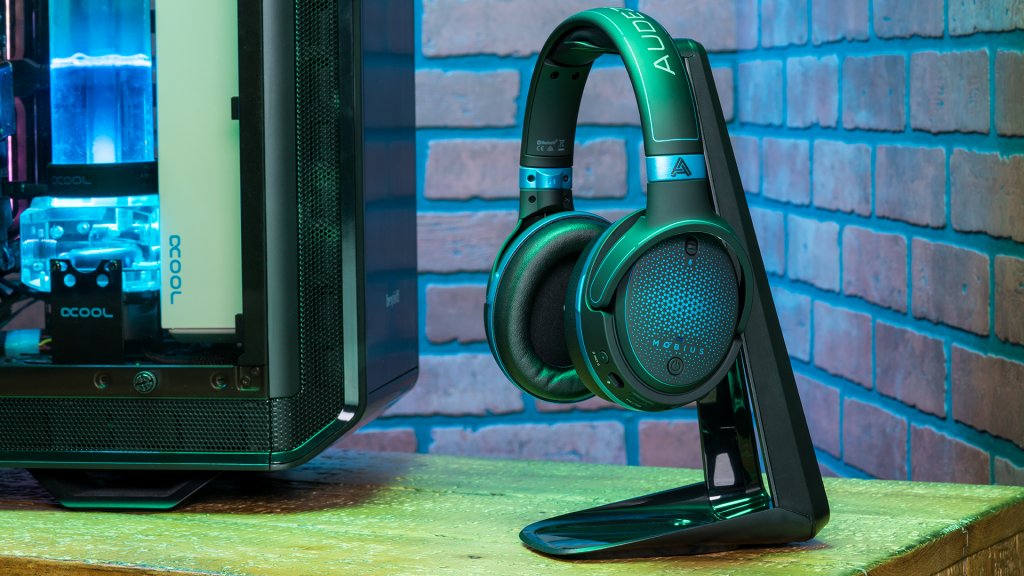
Connecting to a PC or Mac really unleashes the full potential of the Mobius. Not only does USB audio give you the option to experience 5.1 and 7.1 channel surround sound, but Audeze also offers extensive customization options through their Audeze HQ app. Audeze HQ lets user choose custom sound profiles like footsteps, music, ballistics, and RPG, which tweak the EQ settings. Audeze HQ also presents an option for HRTF (Head-Related Transfer Function) personalization. HRTF refers to how our head alters sound frequencies and phases before hitting our ears.The app’s HRTF personalization options let you tweak the audio to accommodate your head’s circumference and inter-aural arc, as well as set the virtual room ambiance.
Room ambiance refers to the size of the virtual room generated by the headphones, and adjusting it controls the reverb and echo of sound, as well the sense of soundstage size. The center of the cyberpunk-esque HRTF UI displays a virtual face that mirrors your head movements while numbers tick alongside displaying the real-time telemetry data (pitch, yaw, and roll) of the head tracking.
Before hopping into my Steam library to test out some games, I wanted to play around with Audeze HQ and hear how music and video sounded over USB audio. Waves, the aforementioned creators of the Waves nx audio tech powerring the Mobius, has a nice player on their website for demoing their 3D audio tech that actually includes some mainstream music that provided nice test pieces for the music-listening capabilities of the Mobius. Among the demos were some stunning surround sound versions of “Dreams” by Fleetwood Mac, and “Nightswimming” by R.E.M. (one of my personal favorites), which sounded absolutely incredible on the Mobius, with a broader soundstage and level of clarity than on any other headphones I have experienced. As a quick aside, the song selection on there is absolutely killer all around, and I would definitely recommend checking it out if you want a taste of the Mobius’ potential.
On the video side, even YouTube videos sound outstanding when connected via USB. Only limited to 2 channels, I really liked the sense of presence the 3D audio lends to even just informational videos or podcasts. If the voices sound too reverb-heavy, you can always turn down the room ambiance in Audeze HQ to reduce the size of the simulated room. Personally, I say bring on the wall of sound!
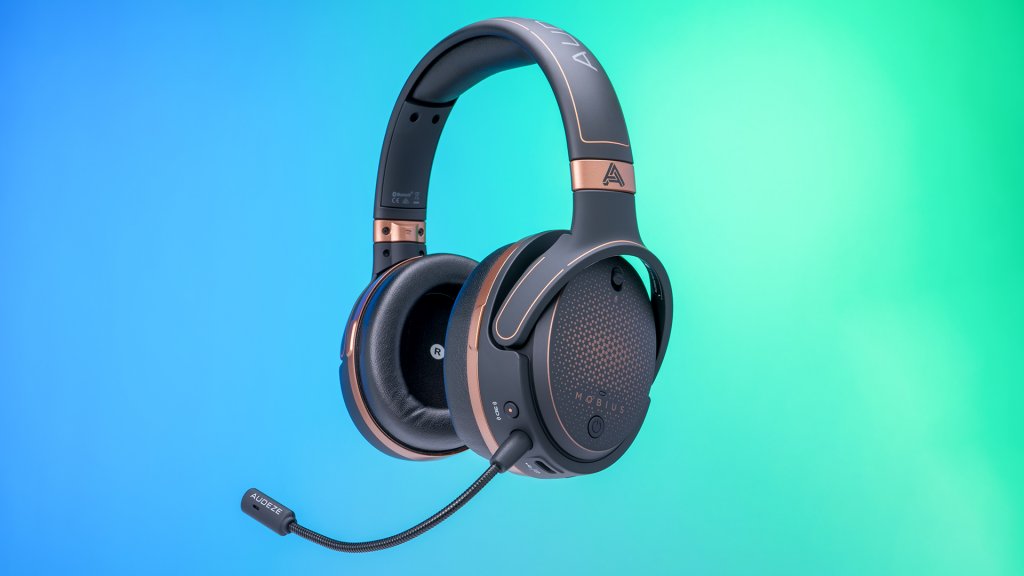
Intrigued by the potential of HRTF’s applications in competitive gaming, I decided to try out a game that already supported a form of HRTF audio for headphones: Counter Strike: Global Offensive. According to Steam, I’ve owned CS:GO for five years and have played it a grand total of two hours over that time. I usually hop in once a year to see if I can get any good at the game, get absolutely destroyed by everyone, and then quit until next year’s folly. Maybe advanced 3D audio was the competitive edge I was missing.
While I still performed, er, suboptimally (one kill, last place on my team in both matches), I had a better awareness of players’ locations than ever before. Counter Strike is littered with audio cues to alert you to the enemy’s presence; from the ricochet of gunfire, to clattering footsteps and bouncing grenades, players need to be conscious of the sound emitted by their actions while paying close attention to their environment. The Mobius’ pristine wide soundscape made it easier for me to pick up on every little clue to the enemy team in a way I had never heard before. Even the shrieking children in the chat sounded…well, they sounded bad, but not because of the headphones, and the chat audio at least mixed well with the game audio.
Satiated for another year on Counter Strike, I hopped into a game that doesn’t make me feel bad about myself, Grand Theft Auto V, to hear how a single-player PC gaming experience sounded with the Mobius. Pretty impressive, it turns out.
Using the word “immersive” wouldn’t give the experience of playing GTA V with the Mobius enough credit. The sounds of Los Santos enveloped me; angry pedestrians honked their horns as my character stood in the middle of street, while meanwhile in real life I leaned back in my chair, dumbfounded by the aural soundscape showcased by the Mobius. As I settled into the auditory wonderland surrounding me, I went off to do a few missions. I turned on the first-person camera so I could really get lost in the world of GTA.
Running around Los Santos with the Mobius never lost its luster. As I continued to play, I found myself doing ridiculous things I would never normally do playing a game outside of VR. When engaged in a conversation, I would look over to the side to acknowledge a passenger in my car, or look behind me when I heard a car beeping at me as I stood in the middle of the street amidst the scrap heap of cars I wrecked in an intersection. The sense of presence in 3D mode is just that strong. If you can’t plunge yourself into a total audio-visual VR world, the Mobius is the next best thing.
Ironically enough, if you’re going to game in VR, Audeze recommends switching the 3D audio on the Mobius off, since most VR headsets already use some form of 3D audio processing internally. Out of curiosity, I hooked the Mobius up to my PlayStation VR headset to test how the clashing 3D audio sounded. I didn’t notice any major anomalies throughout my brief time in VR with the Mobius, in fact I actually enjoyed the way games sounded with the 3D mode left on, as the space still felt larger compared to the stereo mode. That being said, if you’re looking for anything beyond high-end audio, the Mobius doesn’t enhance VR as much as it does for traditional gaming. One major insight I gained from comparing with the PSVR is that the soundscape created from the Mobius’ built-in tech puts the PSVR’s 3D audio processing to shame; the Mobius creates a much more lifelike sound environment than just hooking up a pair of stereo headphones to a VR headset. It really is a new frontier for hearing your games.
Welcome to the Next Level of Sound

I thought I was done drooling over the prospects of high-res audio. I felt that I had come as close as possible to the peak of listening, at least within a reasonable budget. The Audeze Mobius showed me that there’s still plenty of room for mind-blowing audio tech. Now that my testing is done and I’ve parted with the Mobius, all other headphones’ produce a sound environment that just feels narrow and claustrophobic. If the Audeze Mobius is the future of gaming sound, then the gaming worlds, both virtual and real, are about to get a lot bigger.
Featured in this article:
Audeze Mobius 3D Gaming Headphones (Blue)- $399
Audeze Mobius 3D Gaming Headphones (Copper)- $399
Note, all prices and products are accurate at the time of article publication, although some may have changed or are no longer available.

